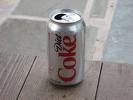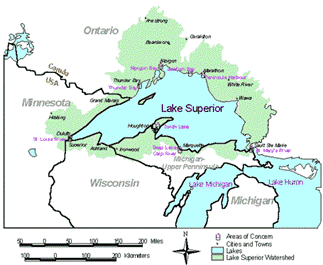“Astropulse:原始黑洞”的版本间差异
(新页面: <big>'''Primordial Black Holes'''</big> One goal of Astropulse is to detect mini black holes that are evaporating due to "Hawking radiation". These mini black holes would have been crea...) |
小 |
||
| 第7行: | 第7行: | ||
When a huge star runs out of fuel, it collapses and then explodes in a supernova. What's left over is a massive but relatively small object called a black hole. To give you an idea of a black hole's density: the sun has a radius of 700,000 km. A black hole that weighs as much as the sun would have a radius of 3 km. If you could fill a typical pop can (12 oz) with the material in such a black hole, the can would weigh 7 trillion tons, almost as much as the weight of the water in Lake Superior.* | When a huge star runs out of fuel, it collapses and then explodes in a supernova. What's left over is a massive but relatively small object called a black hole. To give you an idea of a black hole's density: the sun has a radius of 700,000 km. A black hole that weighs as much as the sun would have a radius of 3 km. If you could fill a typical pop can (12 oz) with the material in such a black hole, the can would weigh 7 trillion tons, almost as much as the weight of the water in Lake Superior.* | ||
| + | |||
| + | [[Image:Pop_can.jpg]][[Image::Equals.jpg]][[Image:Resource-superiorMap.gif]] | ||
Perhaps the most famous fact about black holes is the one that makes them "black": because of a black hole's strong gravity, nothing, not even light, can escape from within a black hole. One way to express this is to say that the escape velocity inside a black hole is greater than the speed of light.** | Perhaps the most famous fact about black holes is the one that makes them "black": because of a black hole's strong gravity, nothing, not even light, can escape from within a black hole. One way to express this is to say that the escape velocity inside a black hole is greater than the speed of light.** | ||
2010年7月24日 (六) 16:39的版本
Primordial Black Holes
One goal of Astropulse is to detect mini black holes that are evaporating due to "Hawking radiation". These mini black holes would have been created during the big bang, unlike currently known black holes.
What is a black hole?
When a huge star runs out of fuel, it collapses and then explodes in a supernova. What's left over is a massive but relatively small object called a black hole. To give you an idea of a black hole's density: the sun has a radius of 700,000 km. A black hole that weighs as much as the sun would have a radius of 3 km. If you could fill a typical pop can (12 oz) with the material in such a black hole, the can would weigh 7 trillion tons, almost as much as the weight of the water in Lake Superior.*
Perhaps the most famous fact about black holes is the one that makes them "black": because of a black hole's strong gravity, nothing, not even light, can escape from within a black hole. One way to express this is to say that the escape velocity inside a black hole is greater than the speed of light.**
What is escape velocity? It's the speed at which you have to throw something to escape a planet or star. For instance, how fast would you have to throw a baseball up in the air, in order to launch it into space, so that it would travel farther and farther away and never come back? (Neglecting air friction.) That's the Earth's escape velocity, about 25,000 miles per hour. This is somewhat more than the top speed of the space shuttle. (The shuttle can afford to travel more slowly, because it propels itself over a period of time, rather than being launched with a single throw.)
If you could somehow go beneath the surface of a black hole, and shine a flashlight out into space, the light coming out of the flashlight would not be going fast enough to escape -- it would fall back toward the black hole. So a black hole never radiates light from inside itself. That makes it "black", so it cannot be seen through a telescope ... it blends right in with the blackness of space around it.
Hawking radiation
... at least, that's what scientists used to think. But the astrophysicist Stephen Hawking theorized that black holes would radiate a tiny amount of light and matter into space. This happens because of virtual particles that appear and disappear in the vacuum. "Vacuum" is the word scientists use to describe space that it is as empty as possible, with no particles, dust, gas, light, or anything else in it. But it turns out that even a vacuum is not truly empty. It contains no ordinary particles, but it does contain "virtual" particles, which appear from nothing and then disappear before they have a chance to go anywhere or do anything. Virtual particles are created in pairs; one virtual particle is made of matter (like an electron), and the other is antimatter (like a positron.)
According to Stephen Hawking, it's possible for virtual particles to be created just outside the surface of a black hole, with one of the two particles falling into the black hole, and the other escaping. This process takes matter from the black hole, and allows it to leave in the form of the escaping particles.
It turns out that smaller black holes radiate more than large black holes. A black hole with the mass of the sun would radiate a negligible amount of energy; it would take 7E33 (7 with 33 zeroes after it) such black holes to equal a 60 watt light bulb. On the other hand, a "small" black hole of one billion tons (the mass of the Great Wall of China) would emit 300 million watts. Over time, this radiation would cause the mini black hole to shrink, and as it shrinks, it would radiate even more strongly. After billions of years, it would finally radiate all of its mass away, evaporating suddenly.
We hope that this evaporation would produce radio waves that Astropulse can detect. The evaporation wouldn't create radio waves directly. Instead, it would create an expanding fireball of high energy gamma rays and particles. This fireball would interact with the surrounding magnetic field, pushing it out and generating radio waves. Birth of a black hole
Where would a mini black hole come from? No known black hole is that small. In fact, all known black holes are created in one of two ways. First, they can come from the collapse and supernova explosion of a large star. A star collapses many times over its life span, each time burning a new kind of fuel. Initially, a star burns hydrogen in a nuclear fusion reaction, turning the hydrogen into helium. The heat from this reaction keeps the star from collapsing under its own weight. When the hydrogen is used up, the star collapses and becomes hotter, until it's hot enough to burn helium. Each time the star uses up one kind of fuel, it collapses further until it can burn the next kind of fuel. When the star uses up all of its fuel, it can settle down as a white dwarf star, or it can explode and leave behind a neutron star or black hole. Black holes resulting from this process weigh 4 to 16 times as much as the sun.
Second, large black holes can result from mergers of smaller ones. The black hole at the center of the Milky Way galaxy weighs 4 million times as much as the sun. Black holes in other galaxies may weigh even more.
These processes only allow for the creation of star-sized black holes or larger. But it has been suggested that tiny black holes could have been created at the beginning of the universe, during the big bang. If that were true, some of those mini black holes might be evaporating right now! Because they would have been created in the very early universe, they are called primordial black holes, and Astropulse tries to detect them.
- The density of a black hole depends on how you count its volume. The pop can calculation assumes that the black hole extends to its event horizon, the surface at which the escape velocity equals the speed of light. It might be better to say that a black hole is a singularity, meaning its mass is concentrated at a single point (of zero volume) at the center. On this view, the black hole's density is infinite!
- Another way to say this is that the black hole warps time and space until "forward in time" becomes "into the black hole." Nothing inside the black hole can escape, or even start to travel away from the black hole, any more than it can go backward in time.

